New house
This was one of my favorite days of the whole trip. This was another moving day. We were driving up to Doolan for our final cottage. We would be staying there for four nights, giving us a chance to settle in a little bit. When we left this house, it would be to drive to the airport and fly home.
 |
| Picture from Shannon Heritage. |
We got an early start, getting out by 0930. That's not bad since we cooked breakfast, cleaned the house and loaded the car. The drive up was uneventful, meaning we only got lost once. Our first stop, on the way, was at Craggaunowen. This is an awesome site. They have an intact fortified house as well as reconstructions of a Crannog (man made island village) and a ring fort. They also have the St Brendan, a reconstructed Curragh used to sail from Ireland to North America in the 1970's.
 |
| "We're going to Craggen-Owyn". |
Owyn was enchanted as soon as he heard the name; "We're going to Craggen-Owyn, we're going to craggen-Owyn". He couldn't wait and as soon as we got there he had to see everything, "right now".
 |
| The sheep-goats. I can't tell what they are. |
They have a heard of sheep, of a type that would have been common during the bronze age/iron age. These guys are running around a paddock right next to the car park. They had some new lambs, which the boys just loved. As soon as Nana and Granddad were ready we headed for the park, payed our admission and started down the road for the first stop, Craggaunowen Castle.
 |
| The explanation of the castle. |
 |
| This is a nicely preserved site, and all original. |
 |
| Not a target for a quick raid. |
 |
| The Great Hall. |
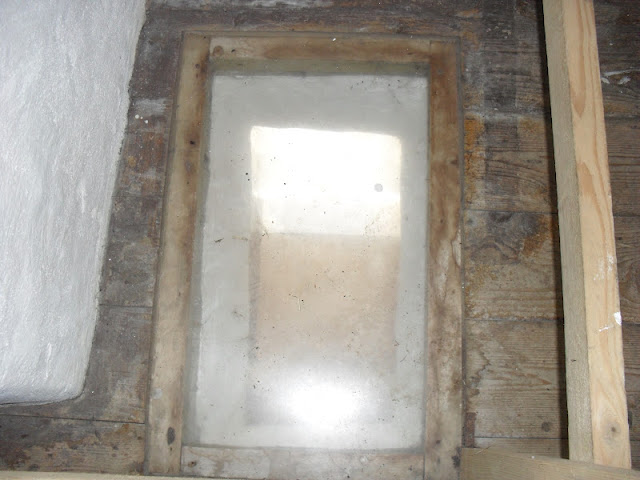 |
| Murder hole above the door. From here defenders could attack anyone who made it through the door. |
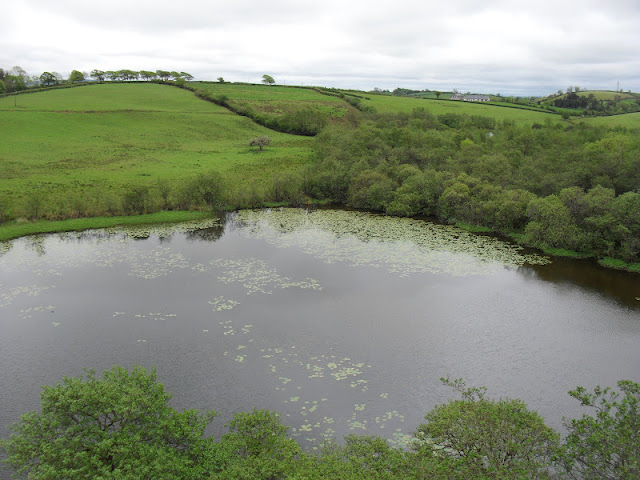 |
| View from the battlements. There don't seem to be any bad views in Ireland. |
 |
| View down to the gate from the battlements. |
Our next goal was the Crannog. On the way, between the castle and the crannog they had a dugout canoe. I was less than impressed with their conservation efforts. This thing is sitting out in a shed with only one wall. For something that is 3500 years old, it's in pretty good shape, but I don't know how long that will last when it is in the open air and wet.
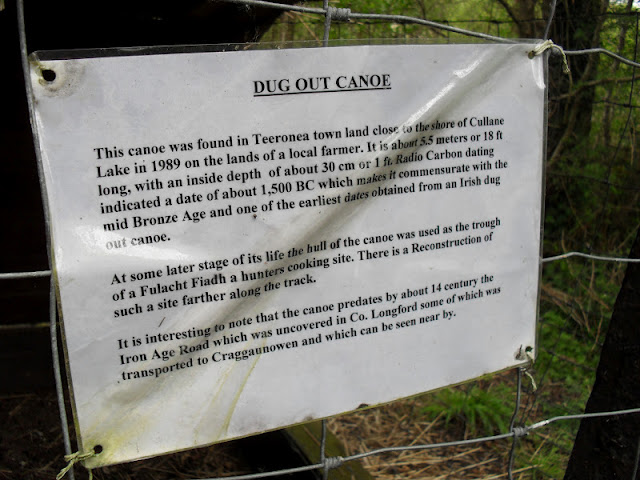 |
| Even this would have been nice at the Battle of the Boyne. I'm still bitter. |
 |
| The 3500 year old dugout canoe. Not impressive until you figure this piece of wood is older than the pyramids. |
Moving on from the canoe we arrived at the Crannog. This is one of the two things I was most looking forward to seeing, (the other being the ring fort). This is the kind of thing I wish they had done at Tara, recreate what it looked like so you can actually see why the hill was significant.
 |
| This is a better explanation than I could give. |
Crannogs were made as an early form of defensive dwelling place. It is only recently, in historical terms, that the Irish lived in any groupings larger than the extended family. The first city in Ireland was established by the Vikings (Waterford). An extended family, of twenty to fifty people would have built something like this. The leader would have been a King, by the way. A, the splendor.
 |
| The entrance. Attackers would be bunched up and easy targets. |
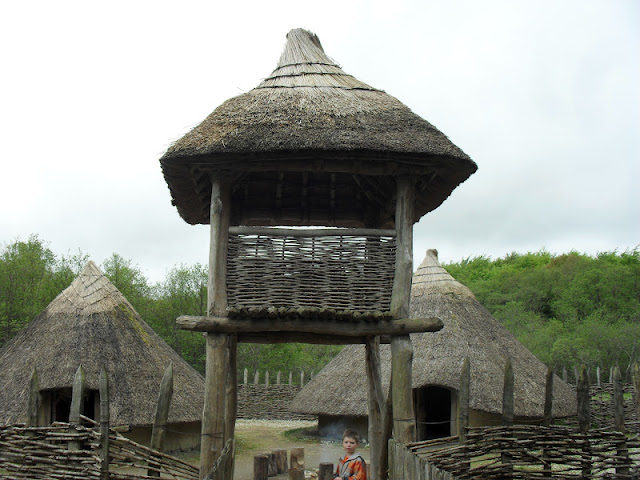 |
| The tower. From up here one or two men could control the bridge. |
 |
| A view of the outside wall. Trim castle it aint. |
Inside the walls, on the island, they had two dwellings. Each would have held a family, up to ten people. They are built in the authentic manner. Woven sticks covered with plaster. The roof is thatch, from marsh reeds. The overhang on the roof is so extreme because it keeps the constant Irish rain from melting the plaster.
 |
| You can see where the bottom of the wall is damaged from the rain. |
 |
| The skin door. Better than nothing, I guess. |
 |
| The interior. Beds and work space along the walls. Fire pit in the center. |
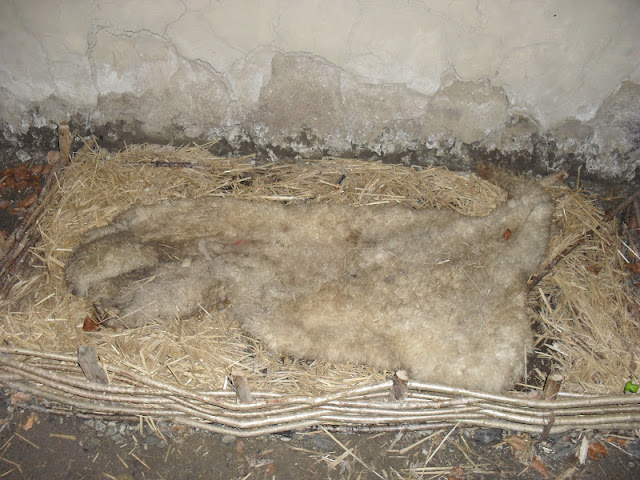 |
| A bed. Tempurpedic it is not. |
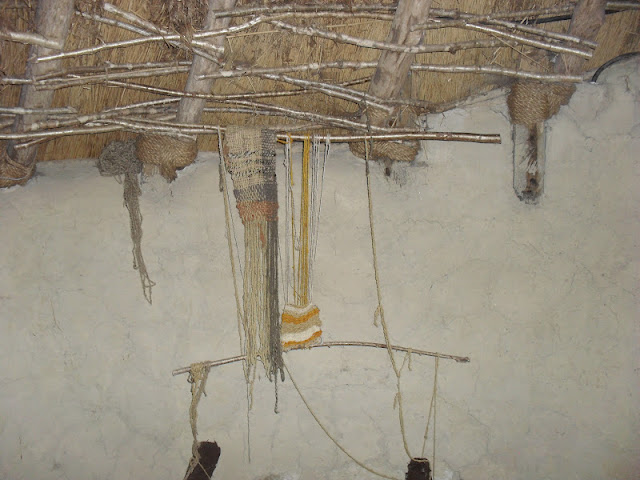 |
| A loom. The interior is no where near this light. |
 |
| A bronze age curragh. This is much less sophisticated than the St Brendan, from the dark ages. |
Moving on from the crannog we passed a field and an iron age road. The road is what, in a later day, would be called a corduroy road. It is logs, cut and laid side by side to form the road bed. Passing these two sites we came to the cooking site. Before the age of pots, there was no good way to boil meat on the move.
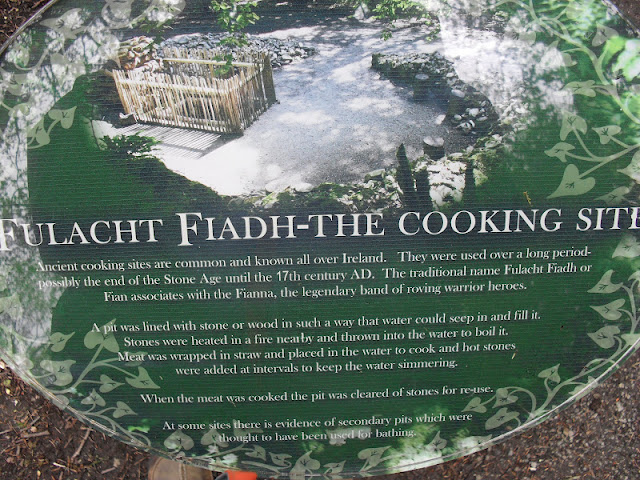 |
| I'm sure the results were just scrumptious. |
 |
| I don't know why they don't still use this method. Weird. |
Following that culinary wonder we followed the road through the forest. This is rough and difficult country. Seeing it you can understand why the Irish were so isolated from each other. Movement through this must have been very difficult.
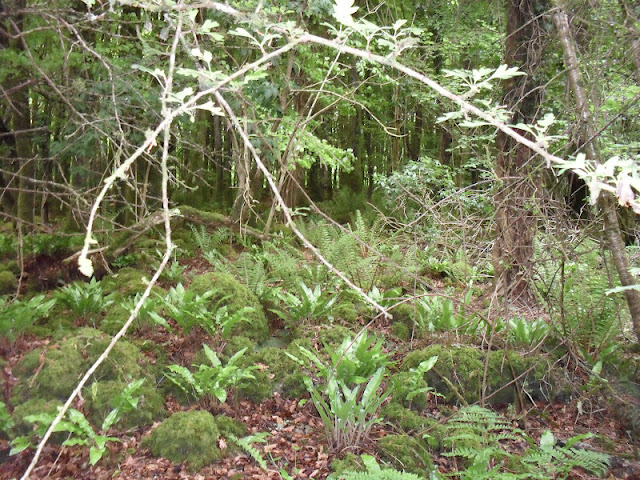 |
| You don't have to worry about nosy neighbors, just cattle thieves. |
The next site is a recreated Portal Tomb. These things are all over Ireland and probably had religious/political importance. This one is a nice example of what they look like.
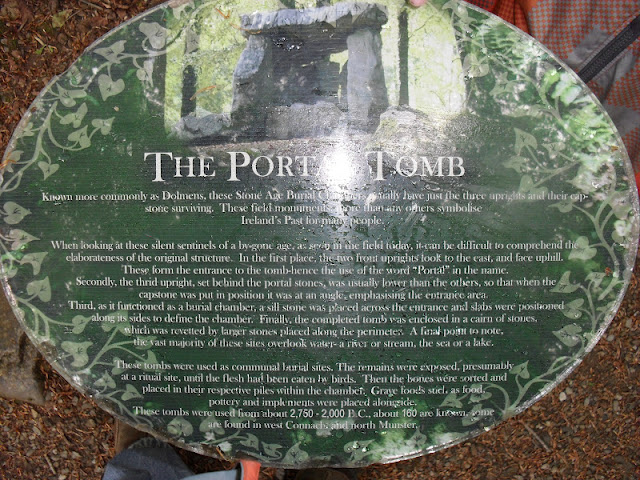 |
| The washed out part says Portal. |
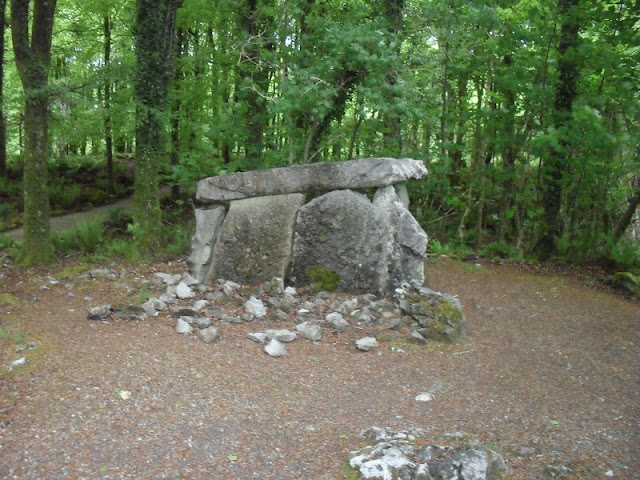 |
| Most of the real ones are not in this good of shape. |
 |
| This is where the bones would have been placed. The flesh was burned off before burial. |
Moving on we passed a totally random standing stone. It could be meant to be an Ogham (ohmm) stone but it does not have any carving on it, that I could see.
 |
| Standing stone. Not sure what is supposed to be going on here. |
Once past the stone we came to the ring fort. This was super cool. Tracy and Owyn had run ahead and were already inside. They wussed out and went in the gate. Rhys and I went in through the tunnel. These forts are everywhere in Ireland. In the Burrans there is one per square km. They were lived from the pre-Christian era up to the 1500's in some places. These would house, again, an extended family. They were fortified for protection. The only form of power, wealth and patronage in Iron Age Ireland was cattle. Cattle raids were a major form of entertainment for a few thousand years.
 |
| The ring fort with the Suterain (underground storage area, sometimes with an external exit). |
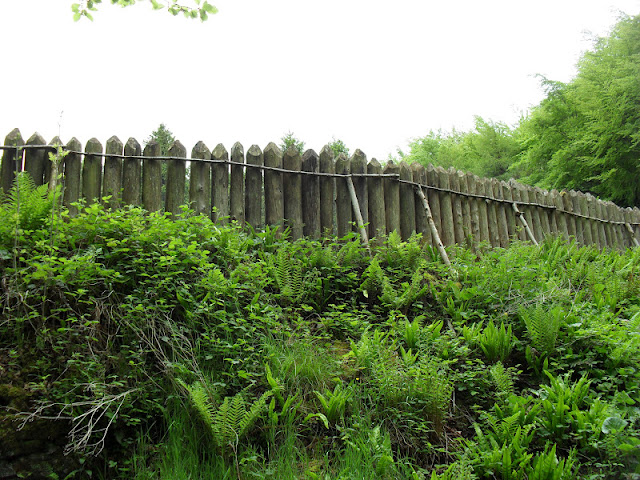 |
| The wooden palisade on top of the stone wall. |
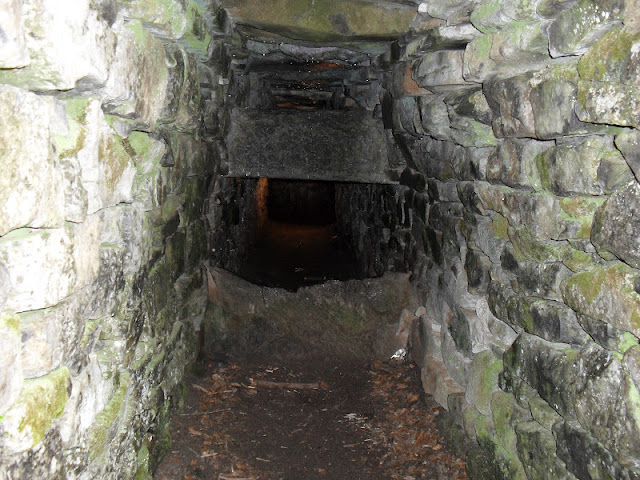 |
| The entrance to the souterrain. The bottom block keeps out animals. The top one forces someones head down, so you can bash it in. |
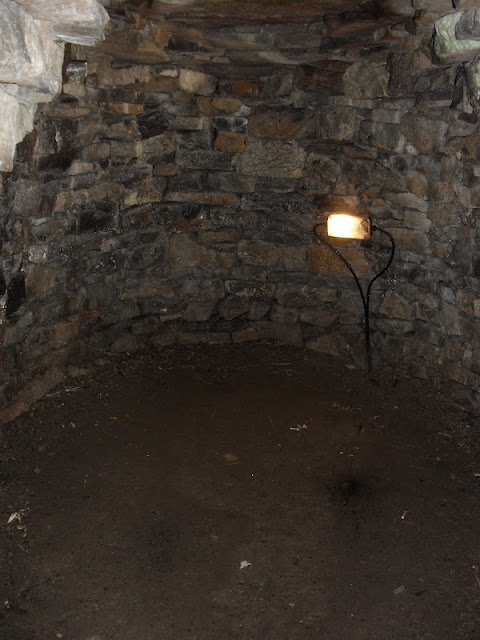 |
| The food store. This would stay twenty to thirty degrees cooler than the outside, year round. |
 |
| The iron age hut. Notice we are now building in stone. The roof doesn't have to go to the ground. |
 |
| Narrative. Embiggen to read. |
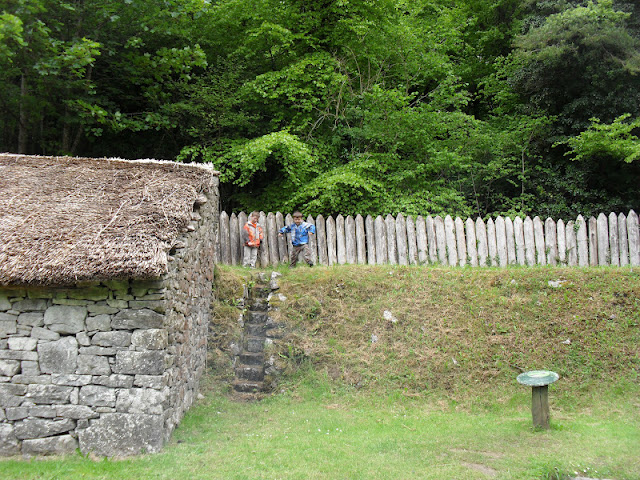 |
| The battlements. The boys have just discovered a toad. The walls are all dry stone (no mortar). |
 |
| Reeds for thatch. |
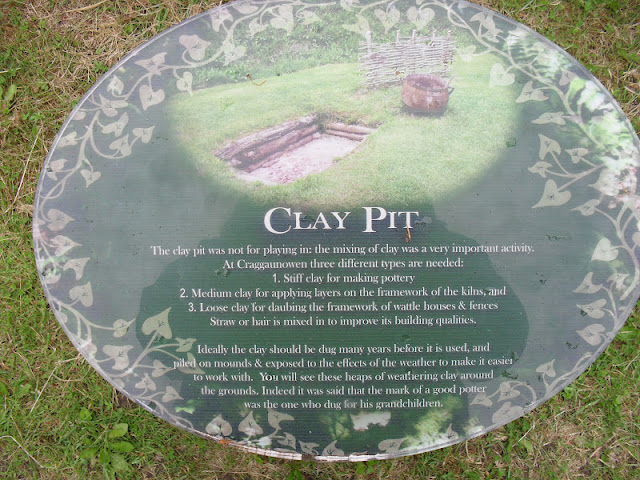 |
| The clay pit. They are making pottery for local use. |
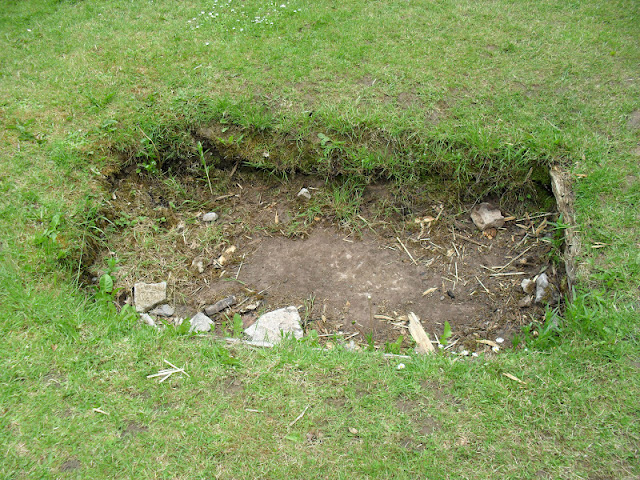 |
| I would expect it to be a bit deeper if people were living here. |
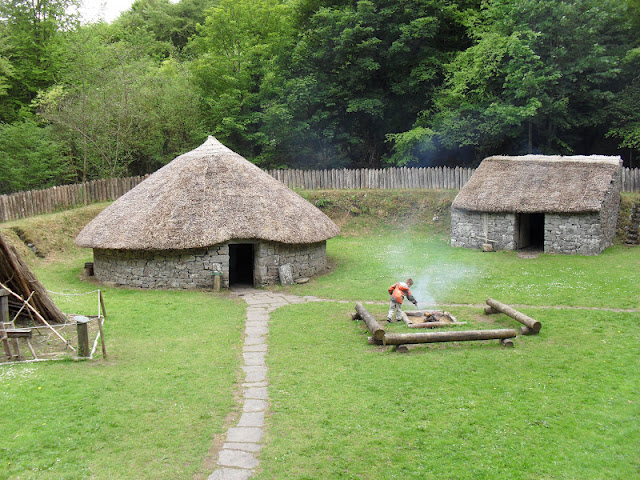 |
| The interior of the fort. Rhys and I came up through the house on the left. |
 |
| The other half of the ring fort. |
 |
| Another nice bit of interpretation. |
 |
| The gate, looking back into the fort. |
Our visit to the ring fort complete, we moved on to the final attraction, the St Brendan. This is a curragh, built using original methods, that was sailed from Ireland to Newfoundland, to prove that St Brendan could have made his voyage.
 |
| It is housed in this totally out of place glass pyramid. |
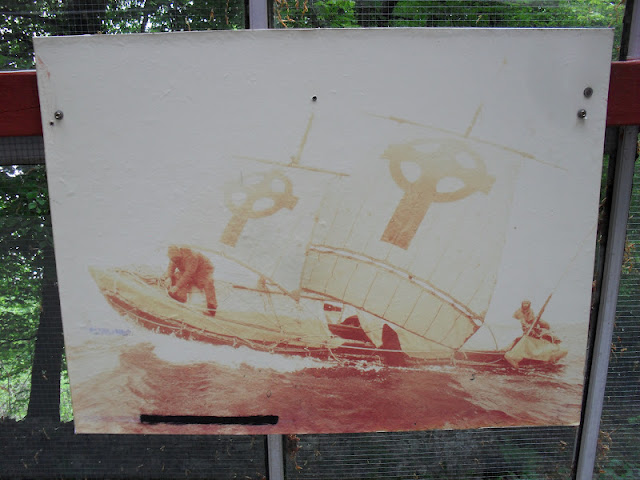 |
| Fun times, to be sure. |
 |
| It looks so easy on the map. |
 |
| Embiggen to attempt to read the labels. |
 |
| The bow shot. This is a small boat. |
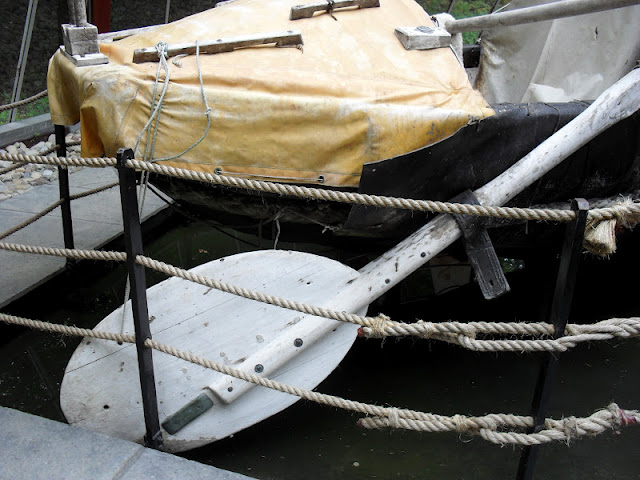 |
| The steering board - Starboard - Right side. |
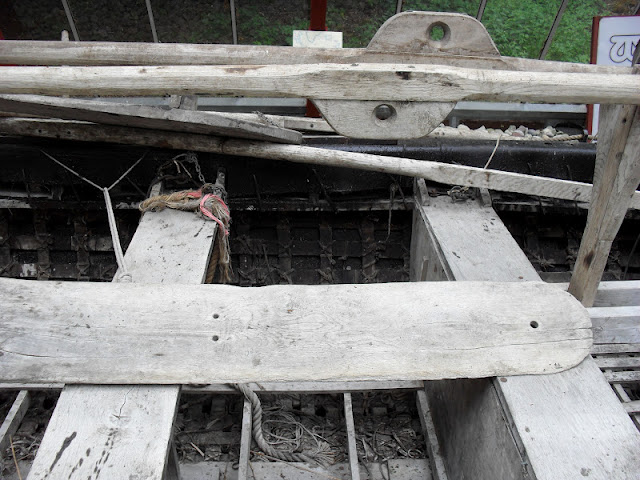 |
| The interior. Just that between you and the angry sea. |
Following the Brendan boat we were done, stick a fork in it, time to go. On the way out we passed the herd of pigs; again a species that would have been common wild here long, long ago. Rhys and I had a conversation about why the fence was there, namely that the pigs would kill us and eat us if it wasn't. He was very impressed by that, but still likes his bacon, as he was quick to tell me.
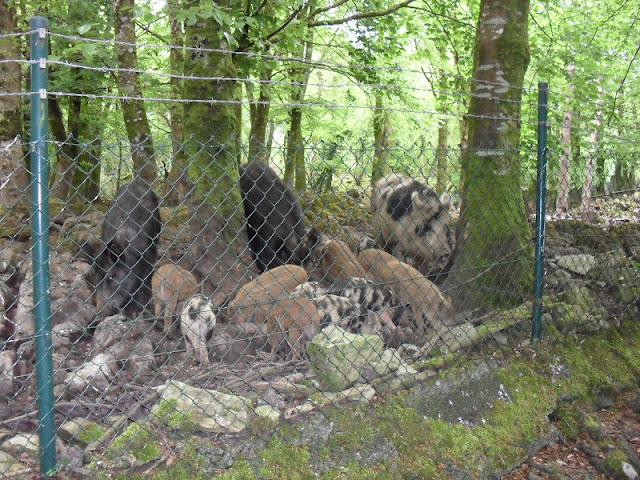 |
| Vicious, killer pigs, or as Rhys calls them "bacon". |
We grabbed some coffee in the, mandatory, tea shop and loaded back into the car. Craggaunowen was enough for a full day all by itself, but we weren't done yet. We had a couple more stops before we got to our cottage. Part 2 to follow presently.

No comments:
Post a Comment